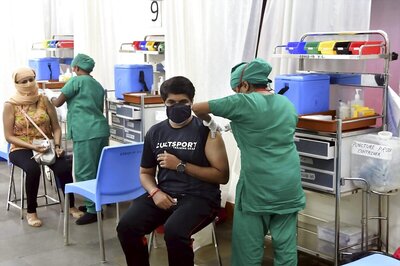
views
Measuring your blood pressure on a regular basis is essential, especially because it aids in the prevention of diseases such as hypertension and hypotension, which can have serious consequences. But, are you going about it correctly? Also, what is the proper way to measure blood pressure? Should it be done on your left or right arm? Here’s everything you need to know about checking your blood pressure.
What is blood pressure?
The force of blood against the walls of your blood vessel is referred to as blood pressure. When the heart contracts, blood pressure reaches a peak, and the measured pressure is known as systolic blood pressure. Diastolic pressure is the pressure recorded when your heart relaxes.
Blood pressure is measured in millimetres of mercury (mmHg) and recorded as a ratio, with the systolic pressure at the top and the diastolic pressure at the bottom.
What is the normal blood pressure rate?
A systolic blood pressure of less than 120 mmHg and a diastolic blood pressure of less than 80 mmHg is considered normal for adults. A systolic blood pressure reading of at least 130 mmHg and/or a diastolic reading of at least 80 mmHg is considered to be hypertension (high blood pressure).
Once the high blood pressure has been consistently measured over an extended period of time, it can be identified. Stress, position, hydration, hormone levels, salt intake, medications, and other factors can all have an impact on blood pressure. Blood pressure should be measured multiple times rather than just once because it might change from minute to minute.
Why do the readings from the two arms vary? Is it necessary to correlate the two?
In an interaction with Indian Express, Dr Bimal Chhajer, a former consultant at AIIMS and founder of SAAOL Heart Institute (Science and Art of Living), explained the anatomical difference in both arms.
He explained that the main artery that transports blood from your heart to the rest of your body, known as the aorta, has branches in the left and right arms in the form of subclavian arteries. Because the subclavian artery in the right arm is 90 degrees from the aorta, the pressure is slightly lower. The subclavian artery from the aorta has a better angle in the left hand, around 170 degrees, so it is more trusted as a source of measuring BP and works for most people.
Chhajer revealed, “A comparative difference may be done on a case-specific basis. If the difference in readings is by 2 to 3 mm Hg, rather than 10 mm Hg, then there is no need to follow the double drill. But if more than 10, then we investigate for blockages or constriction in the subclavian artery”. He further added, “This is what we call an obstructive arterial disease and a diagnosis is based on consistent interarm readings. Then we proceed to treat that condition”.
Is monitoring your BP with a home device good?
Many people ask whether getting their blood pressure checked manually or using a home gadget is preferable. Whom should one put more faith in? According to Dr Chhajer, electronic devices are now being used in hospital outpatient departments as well. He went on to say that they only needed to be from a reputable, ISI-certified company. He mentioned, “A good way to check their efficacy is by getting your BP read in a conventional manner and then checking it on your device.” If the end reading appears to be similar, it means that the machine works fine, he added.
(Disclaimer: Opinions expressed above are sourced from different articles. The website doesn’t guarantee 100% accuracy of all the facts)
Read all the Latest Lifestyle News here



















Comments
0 comment